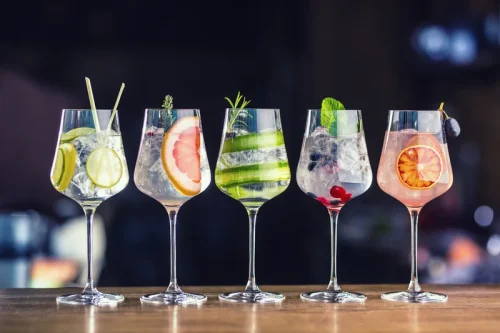
Many drinkers at this stage are more likely to drink and drive or experience legal troubles as a result of their drinking. Frequent, uncontrolled alcohol abuse eventually leads to problem drinking. While any form of alcohol abuse is problematic, the term “problem drinker” refers to someone who starts experiencing the impacts of their habit.
Severe Alcohol Use Disorder
And you can shift from the downward spiral of alcoholism and toward the upward trajectory at any point. The stages of alcoholism are a helpful tool to help determine the progression of alcoholism but they are by no means a rule. They outline the typical trajectory of alcoholism to reveal the steady decline from social to chronic alcohol use.
The Consequences of Alcoholism
This new phase of research laid the groundwork for how we understand alcohol addiction today. Alcoholism is characterized by an uncontrollable five stages of drinking physical and psychological urge to drink. They will physically crave the substance and be inconsolable until they taste it.
Alcoholism Stages − Get Professional Help

Someone who is at the point of end-stage alcoholism needs treatment as soon as possible. If they choose not to address their drinking problem, they’re likely to drink themselves into an alcohol-induced illness, such as cirrhosis or cancer. Signs such as drinking at work, while looking after children or when driving are indicators of this stage. You’ve likely become more irritable, and alcohol may start to affect you differently. You’ll need to drink more to achieve the same effects you used to feel and often pass out from alcohol.
- After a long period of continuous heavy drinking, alcohol has contributed to the damage and deterioration of vital organs such as the liver, heart, kidneys, pancreas, and brain.
- My area has one of those weird over-the-air channels that plays reruns of third-tier sitcoms like Mr. Belvedere and Dear John.
- You’ll want to find a rehab center that has medically-supervised detox capabilities so that you can comfortably and safely detox from alcohol.
- Suppose you believe that a person’s drinking habit has turned into alcohol addiction.
- But they also play old episodes of the Johnny Carson-era Tonight Show, although stripped of all branding to tie it to Tonight Show, for what is clearly legal purposes.
- The DSM is the latest attempt by doctors to understand and diagnose this disorder.
- Go to an Al-Anon or Alateen meeting or set up an appointment with a mental health professional.
- Similarly, when a person increases their alcohol intake, they also increase the risk of damage to their body.
Too much alcohol can be toxic to liver cells, causing dehydration and permanent scarring—which ultimately affects the blood flow. With excessive alcohol consumption, this important organ can’t metabolize Vitamin D, which could develop into a deficiency. Some common signs and symptoms of cirrhosis include fatigue, itchy skin, weight loss, nausea, yellow eyes and skin, abdominal pain and swelling or bruising.
- This disease is progressive, and your health will eventually bear the brunt.
- Whether they realize it or not, they’re beginning to lose control of their drinking.
- As alcohol consumption increases, the liver adapts to break down alcohol more quickly.
Despite feeling sick from drinking, it won’t be enough to stop the following day. Problem drinkers may also experience mental health issues such as depression, anxiety, and sleep problems. At this point, drinkers may experience relationship issues, decreased social activity, or a sudden change in friends. These physiological changes contribute to the increasing tolerance seen in early-stage alcoholics. Despite heavy alcohol consumption, they may show few signs of intoxication or ill effects from drinking, such as a hangover.

Recovery Coaching
The alcoholic probably isn’t sleeping or eating well at this point and may not be keeping up with personal hygiene. Individuals are on the brink of alcohol use disorder, with drinking firmly rooted in their daily routines. Despite awareness of the adverse effects, there is a struggle to abstain from alcohol. If someone has an issue with alcohol, the sooner they seek help, the better. Addiction cannot be cured, but it can be managed like other chronic health conditions, including asthma and diabetes.

Phases of the Jellinek Curve
This blog provides information, news, and uplifting content to help people in their recovery journey. Contact us for a free assessment, and allow us to show you how our program can help you lead the life you want, unshackled by addiction and surrounded with love. End-stage alcoholics are also at a high risk of dying from accidents, trauma and suicide. Cirrhosis can cause a host of other health problems, including high blood pressure, which can lead to the development of enlarged veins in the esophagus called esophageal varices.
Your addiction does not have to define who you are.
Our team does their best for our readers to help them stay informed about vital healthcare decisions. Calls to our general hotline may be answered by private treatment providers. We may be paid a fee for marketing or advertising by organizations that can assist with treating people with substance use disorders.
- No one should assume the information provided on Addiction Resource as authoritative and should always defer to the advice and care provided by a medical doctor.
- Others can help you reduce cravings and normalize body functions.
- However, continued use can lead to alterations in brain structure and function, amplifying vulnerability to addiction.
Helpful Resources for Families and Loved Ones

We cannot guarantee payment or verification eligibility as conveyed by your health insurance provider will be accurate and complete. Payment of benefits are subject to all terms, conditions, limitations, and exclusions of the member’s contract at time of service. Those struggling with AUD usually had their first exposure to alcohol during their teenage years, driven by curiosity or peer influence.

Leave a Reply